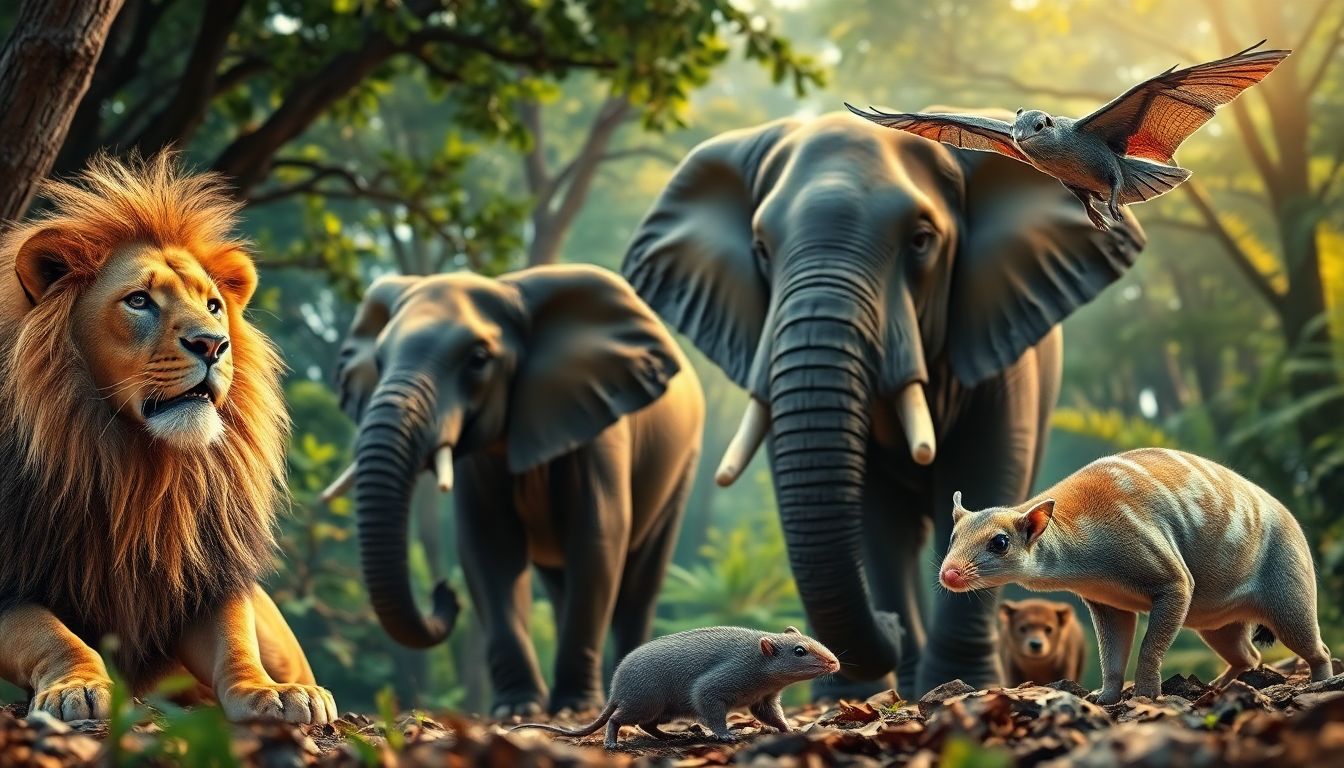
Ever wondered what sets a cuddly cat apart from a scaly reptile? Mammals are a diverse group, found across the planet. From the icy Arctic to hot deserts, mammals thrive. But what truly makes a mammal a mammal?
This article looks at the features and journey of mammals. Get ready to explore what makes them special.
Defining Characteristics of Mammals
Certain traits are shared by almost all mammals. These are the core things that make a mammal a mammal. Let's dive in!
Hair or Fur
Hair is a big deal for mammals. It's made of keratin, the same stuff as your fingernails. Fur keeps mammals warm. Think about a polar bear in the Arctic. Its thick fur keeps it cozy in freezing temps. Hair can also provide camouflage. Some mammals blend into their surroundings because of their fur. Hair even helps with sensing the world. Whiskers on a cat are great examples. The development of hair and fur is pretty cool. It shows how creatures adapt to their homes.
Mammary Glands and Lactation
Mammary glands are a game-changer. These glands make milk to feed young ones. It's how mammal moms nourish their babies. Hormones play a big role in making milk. Lactation gives offspring a better shot at survival. Baby mammals get the nutrients they require. This is a huge evolutionary advantage.
Three Middle Ear Bones
Mammals have three tiny bones in each middle ear. These bones are named the malleus, incus, and stapes. They help mammals hear sounds better. These bones came from jaw bones in ancient reptiles. Cool, right?
Warm-Bloodedness (Endothermy) and Metabolism
Warm-bloodedness is a key mammal feature. Mammals keep a steady body temperature. This is known as endothermy.
High Metabolic Rate
Mammals need a lot of energy. This is due to their high metabolic rate. Endothermy and high metabolism go hand in hand. Staying warm takes fuel. Mammals have special adaptations for their energy needs.
Insulation Mechanisms
Fur isn't the only method to stay warm. Blubber also keeps them cozy. Whales have thick blubber. This keeps them warm in cold water.
Diversity and Adaptation
Mammals have conquered almost every habitat on Earth. This group has diversity, big and small. Their adaptations are as diverse as the landscapes they occupy.
Terrestrial Mammals
Giraffes' necks are super long. This helps them reach high leaves. Lions have strong jaws and sharp teeth for hunting. Groundhogs dig to avoid predators. Each continent has its own collection of land mammals.
Aquatic Mammals
Whales evolved streamlined bodies. They also developed blowholes for breathing. Seals have flippers and blubber for cold water. Otters have dense fur to keep them warm. These creatures have made the ocean their home.
Flying Mammals
Bats are the only mammals that can fly. Their wings are like modified hands. Echolocation helps them "see" in the dark. They catch insects mid-air.
Mammalian Evolution and Origins
Mammals evolved over millions of years. Their story is linked to ancient reptiles and world-changing events.
From Synapsids to Mammals
Synapsids were early relatives of mammals. They existed long before the dinosaurs. Over time, the jaw and teeth changed. These changes led to the mammals we see today.
The Rise of Mammals After the Dinosaurs
Dinosaurs died out 66 million years ago. This extinction event gave mammals a chance to thrive. They filled vacant ecological niches. Mammals diversified into many shapes and sizes.
Conservation and the Future of Mammals
Many mammals face serious threats. It's our job to help them. Without intervention, we risk losing their critical roles in the environments.
Threats to Mammalian Biodiversity
Habitat loss is a big problem. Climate change also affects mammals. Poaching is still happening. About a quarter of mammal species are threatened. This means they could disappear forever.
Conservation Strategies and Efforts
Parks and reserves protect habitats. Anti-poaching patrols protect wildlife. Some groups rescue and rehabilitate injured animals. You can support mammal conservation by donating. Reduce your carbon footprint to fight climate change. Educate others about the importance of mammals.
Conclusion
Mammals are unique due to their features. Hair, mammary glands, and middle ear bones define them. They keep ecosystems healthy. It's up to us to protect them. We must conserve these incredible creatures for generations.











0 Comments